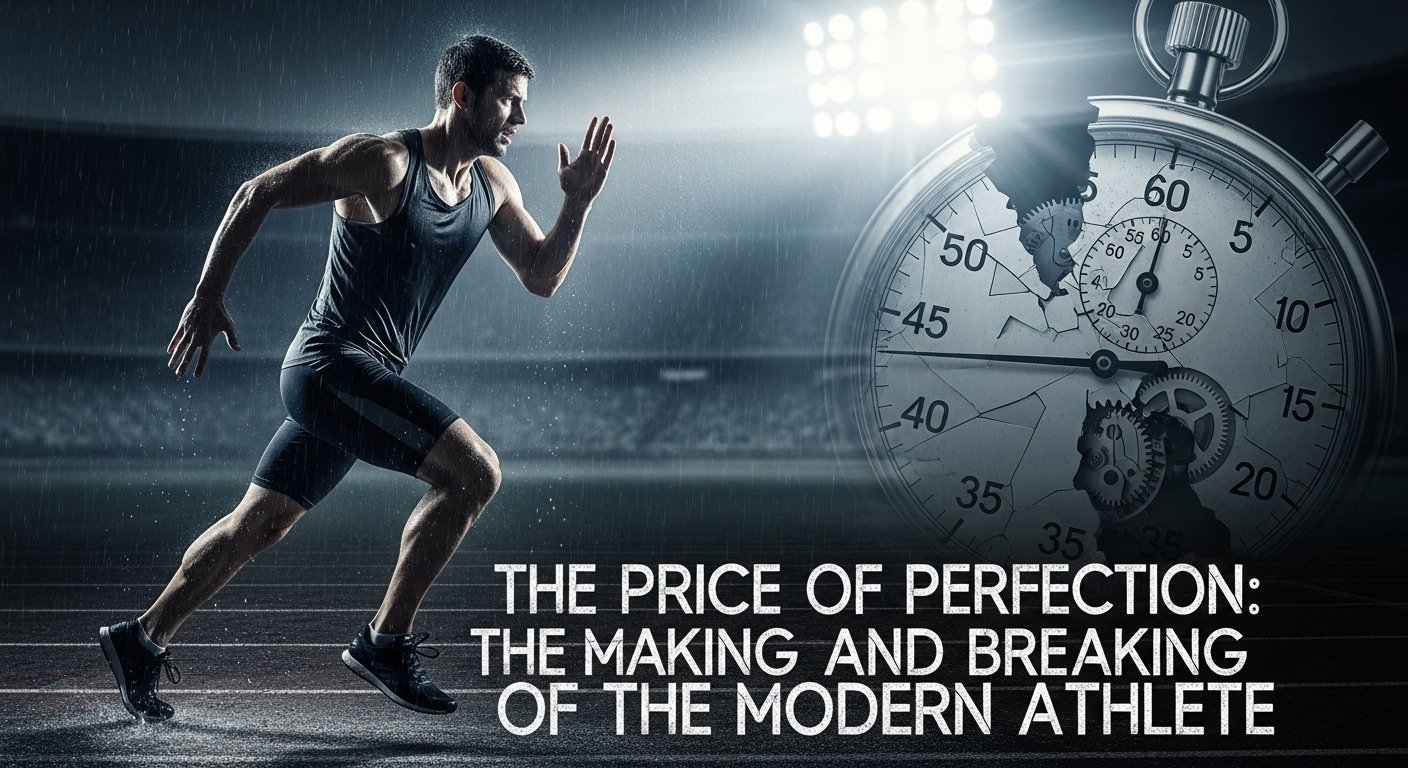We see them on our screens, figures of seemingly superhuman ability. A basketball player defies gravity, a sprinter shatters a world record, a tennis player returns an impossible shot. The modern elite athlete is a marvel of human performance, their body sculpted by science, their strategy optimized by data, and their life dedicated to a singular pursuit of excellence. They are the pinnacle of what the human form can achieve. Yet, behind this gleaming façade of perfection lies a more complex and often troubling reality: a world of immense mental strain, chronic physical sacrifice, and the relentless pressure of perpetual optimization.
The 21st-century quest to create the “perfect athlete” has transformed sports into a high-stakes science experiment. While this pursuit has pushed the boundaries of human performance to once-unthinkable heights, it is exacting a significant and growing human cost on the athletes themselves, forcing us to ask difficult questions about the price of victory.
The Data-Driven Athlete: The Body as an Analyzed System
The intuitive art of sport has been systematically augmented by the cold, hard science of data. The “Moneyball” revolution, which began with baseball statistics, has now permeated every major sport. In 2025, athletes are not just players; they are walking data platforms. They wear biometric sensors in training that track heart rate variability, muscle exertion, sleep quality, and hydration levels. GPS units map their every movement on the field, measuring acceleration, distance covered, and sprint speeds.
This torrent of data has shifted the locus of control from the athlete’s intuition to the coach’s algorithm. Roster decisions, playing time, and in-game strategies are now heavily influenced by predictive analytics. The traditional “eye test” of a scout is often validated or overruled by statistical models that identify unseen efficiencies and weaknesses. The athlete’s body is increasingly treated as a complex system to be fine-tuned for maximum output, a machine whose performance can be quantified, predicted, and optimized. While this leads to incredible gains, it also risks turning players into assets on a spreadsheet, their innate creativity and feel for the game sometimes taking a backseat to what the numbers dictate.
The Mental Health Crisis: The Pressure in the Glass House
The same technologies that optimize performance also amplify pressure to an unprecedented degree. Social media has placed athletes in a 24/7 glass house, where every performance, off-hand comment, and personal moment is subject to instant and often vitriolic public judgment. The direct line to millions of fans and critics has eliminated any semblance of a private life.
This, combined with the internal pressure to justify massive contracts and live up to public expectations, creates a crucible of mental strain. In recent years, the sports world has undergone a belated but necessary reckoning, as numerous high-profile athletes have courageously spoken out about their struggles with anxiety, depression, and burnout. The myth of the mentally infallible champion has been shattered, revealing the vulnerable human beings beneath the heroic exterior.
This pressure begins earlier than ever. The trend of early specialization sees children encouraged to abandon all other sports to focus on one by the age of ten or even younger. This hyper-focus, driven by the dream of a professional contract or a college scholarship, is linked to higher rates of overuse injuries, social isolation, and burnout, often extinguishing a child’s love for the game before they even reach their full potential.
The Physical Toll: Pushing Past the Breaking Point
While modern athletes are undoubtedly fitter and stronger than their predecessors, the games they play are also faster, more powerful, and more demanding. This has created a paradox: peak physical conditioning coexists with a constant battle against injury. The sheer force of collisions, the torque on joints, and the attritional nature of a long season push the human body to its absolute limit. The risk of injury can be seen as a function of these intense demands:
Rinjury∝Trecovery(Igame×Vseason)
Where Injury Risk (R) is proportional to the Game’s Intensity (I) multiplied by the sheer Volume of a long season, divided by the available time for true Recovery (T).
This equation is why the concept of “load management”—strategically resting healthy star players—has become a common yet controversial practice in many leagues. It is a direct admission by teams and sports scientists that the physical demands of a full professional season are often unsustainable for the human body. This reality exists alongside the constant temptation for athletes to seek a chemical edge, leading to a perpetual cat-and-mouse game between ever-more-sophisticated performance-enhancing drugs and the anti-doping agencies tasked with ensuring a level playing field.
The Ethical Horizon: Engineering the Future
As science continues to advance, we are approaching a new frontier of ethical dilemmas. The conversation is shifting from training and nutrition to direct biological and neurological enhancement.
- The Genetic Frontier: The possibility of “gene doping”—using gene-editing technologies like CRISPR to alter an athlete’s DNA to enhance traits like muscle growth, oxygen capacity, or endurance—is no longer pure science fiction. While still theoretical, it poses profound questions about the nature of sport.
- Neuro-enhancement: Technologies like transcranial direct-current stimulation (tDCS), which apply a weak electrical current to the scalp to supposedly accelerate motor learning and improve focus, are already being explored by athletes and teams.
These developments force us to confront difficult questions. If these technologies become safe and accessible, where do we draw the line between therapy and enhancement? What does “natural ability” even mean in an age of biological engineering? Does this create an insurmountable gap between the technologically enhanced and the “natural” athlete?
Conclusion: Reclaiming the Human Element
The modern athlete is a paradox. They are a testament to the incredible heights of human potential, but they are also a cautionary tale about the human cost of a culture obsessed with optimization. The relentless pursuit of perfection has produced breathtaking results, but it has also created an environment of immense physical and mental strain.
The future of sport depends on finding a more humane and sustainable balance. We, as spectators, and the institutions that govern sports must evolve our perspective. We must learn to celebrate the human being behind the performance, prioritizing their long-term physical and mental health over our demand for short-term results. The goal should not be to engineer perfect, unbreakable machines, but to create an environment where talented, dedicated human beings can flourish, acknowledging that their vulnerabilities are as much a part of their compelling story as their superhuman triumphs.



